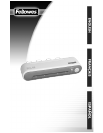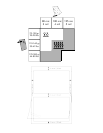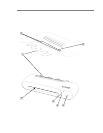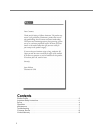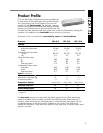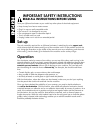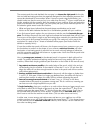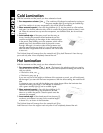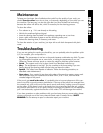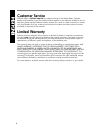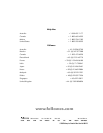
5
The contents and the mode decided, the next step is to
choose the right pouch
for the job.
Hot and cold laminating pouches are especially designed for their separate purposes and
cannot be substituted for one another. When it comes to pouch size and thickness, you
should make sure that the one you buy is no wider than the entry
ቨ
of your model and not
thicker, together with the contents, than the capacity of your machine. If you are laminating
paper of a standard size and weight, you can quickly see your pouch thickness options on
the selection guide stored under the machine:
• White and gray boxes indicate that the pouch/paper combination can be used
• No box on the table indicates that there is no combination possible with your machine.
If you find several pouch options for your document, take the one that
best suits the pur-
p o s e
: The thicker the pouch, the more rigid and resistant the laminated sheet will be. If you
are not sure of the paper’s weight or are laminating other materials, the combined thick-
ness of the pouch and contents should be your guide. The maximum in this case is the
equivalent of a stack of 6 to 7 sheets of standard office paper. (See Product Pr o f i l e for
details on capacity limits.)
If even the smallest size pouch will leave a lot of space around your contents or you want
the lamination to conform to the shape of your contents,
wait to cut it to size
until after
lamination: a laminating pouch is precision-cut to ensure minimal leakage of adhesives,
and this cannot be replicated with scissors or a paper-cutter. You’ll also find the pouch easi-
er to cut when it is hardened.
How you
arrange your contents
in the selected pouch is important in both cold and hot
modes. To produce professional-looking results and ensure a long working life for your
machine, follow these simple guidelines (see illustration on the inside of the manual cover)
:
1 .
Lay contents as close as possible
to the sealed edge of the pouch, which is the end you
will be feeding into the machine. If the material is more than 1 cm or 1/2 inch from this
edge, the rollers will not have enough traction to draw in the pouch and will turn continu-
ously without advancing it.
2 .
Arrange multiple items close to each other
in the pouch, with the edges no farther than
1 cm or 1/2 inch apart. If there is a larger gap between items, the rollers will slip into it
and lose their traction. As above, the rollers will turn without advancing the pouch.
3 .
Leave a free margin around contents
of at least 3 mm, or 1/8 inch, on the three
unsealed sides of the pouch to guarantee a strong seal. This is a minimum, meaning you
can have as much margin beyond this as you wish.
To
begin laminating
, place your machine on a work surface where you have enough room
at the back to allow the full length of the pouch to clear the material exit
ቤ
. Plug in the
machine and press the power button
ብ
, which will start the rollers turning. If you plan to
do laminate both cold and hot in one session, it makes sense to
start with cold
, so you
don’t have to wait for the machine to cool down. (This can take one to two hours.)
In either case, to save energy and reduce wear-and-tear on your machine, turn off the
machine as soon as you are finished by pressing the power button
ብ
. If you forget, howev-
er, the machine has an
automatic switch-o f f
function, which causes it to turn itself off one
hour after not being used.



